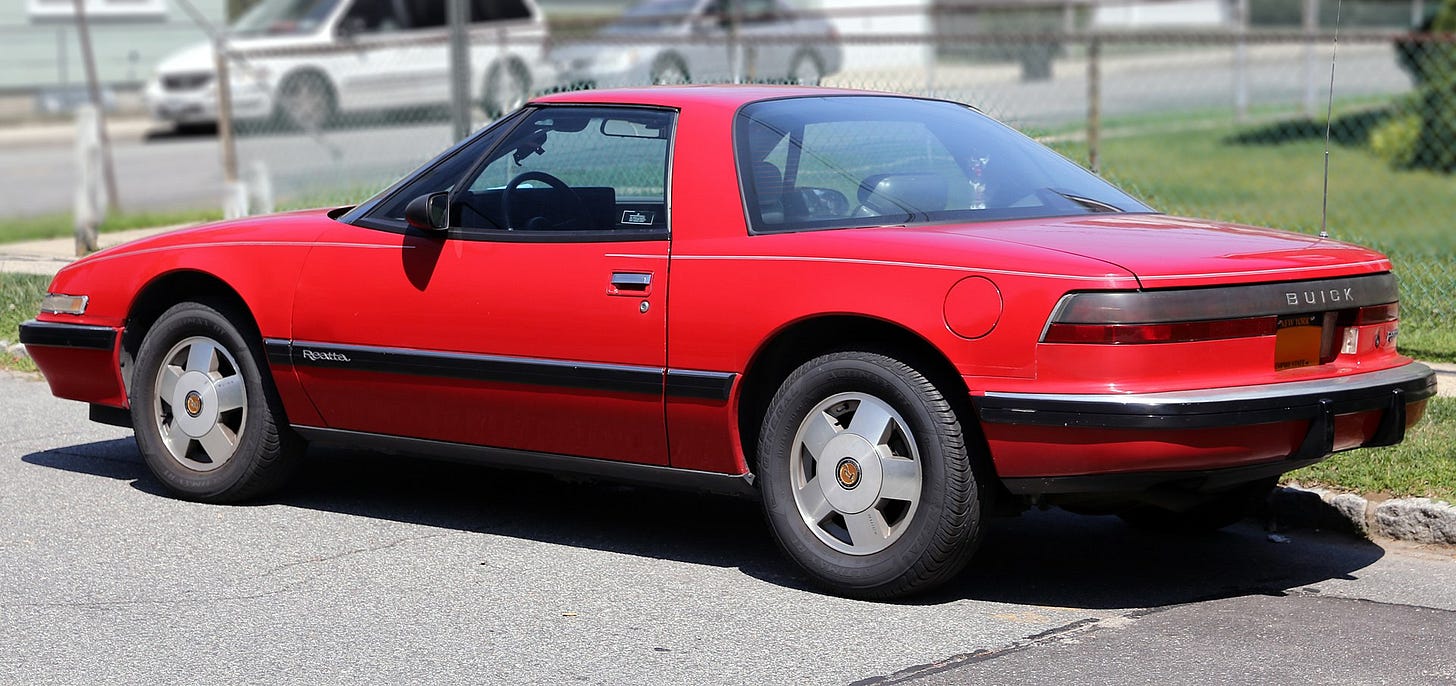The Buick Reatta
A Quiet Divergence from the Monotony of the Ordinary
Ah yes, the Buick Reatta, that idiosyncratic attempt at an American legend. It exemplifies a fleeting moment when the General Motors bureaucracy allowed a fragment of whimsy to slip through the cracks. Low in volume and high in aspiration, this two-seater coupe (1988–1991) and convertible (1990–1991) bore the hallmarks of ambition constrained not only by budget, but also by an inherent misunderstanding of what makes a car great.
At its heart lay the venerable Buick 3800 V6 engine, a transverse arrangement that channeled its modest 165–170 horsepower to the front wheels—a configuration that said pragmatism more than passion. Nevertheless, with its fully independent suspension and four-wheel disc brakes (with ABS), the Reatta offered a driving experience that was as competent as it was uninspired, achieving its electronically limited 125 mph with a businesslike demeanor.
A Halo Car Built by Hand, Sort Of
Manufactured in what Buick grandly termed the "Reatta Craft Center" in Lansing, Michigan, the car's assembly process eschewed the traditional conveyor belt in favor of robotic choreography. Teams of artisans—though the term stretches credulity—labored over their assigned stations, a nod to the boutique craftsmanship associated with finer European marques. PPG Industries performed the paintwork under contract, ensuring that the Reatta gleamed with the promise of sophistication, even if eventually failed to deliver.
Features: Luxurious Details Amid the Mundane
The Reatta's interior presented an earnest, if not slightly confused attempt at opulence. Twin bucket seats offered more lumbar support than lateral bolstering, while the lockable bins and access hatch behind them betrayed a whiff of practicality. Early models included an avant-garde touchscreen, the Electronic Control Center (ECC), which ambitiously controlled everything from the radio to diagnostic systems—a bold innovation that proved too clever by half. Later iterations reverted to tactile buttons, tacitly acknowledging that the future had arrived prematurely.
Optional 16-way power seats and keyless entry rounded out a spec sheet that straddled the line between luxury and necessity. And for those nostalgic for idiosyncrasy, the Reatta held the distinction of being Buick's only car with pop-up headlamps—a curious choice that lent an otherwise subdued design a faint glimmer of intrigue.
Convertible and Special Editions: Limited Aspirations
The convertible variant, introduced belatedly in 1990, added a touch of romance to the Reatta's restrained ethos. Crafted by ASC, its manually operated top—later upgraded with power pull-down assistance—hid beneath a rigid tonneau cover when stowed. Though elegant in concept, the convertible's execution highlighted the Reatta's perennial struggle with identity: neither fully luxurious nor sporty.
Special editions, such as the "Select Sixties" models, attempted to inject exclusivity into the lineup. These cars, produced in limited numbers, featured unique color schemes and emblems—trinkets that attempted to elevate the Reatta into collectible territory. Yet, like many such exercises, these efforts felt more like gilding the lily than burnishing a masterpiece.
A Noble Failure
The Reatta’s production—just over 21,000 units in its four-year run—speaks less to exclusivity and more to tepid market reception. Intended as a halo car for Buick, it instead became a footnote, overshadowed by more cohesive offerings such as the Cadillac Allanté. Its demise in 1991 was both inevitable and unremarkable, though its brief existence remains a testament to the peculiar optimism of American automaking in the late 20th century.
Legacy: An Anomaly Worth Remembering
In hindsight, the Buick Reatta occupies a curious niche. It is neither a monument to engineering nor a cautionary tale of hubris, but rather a quiet example of ambition constrained by pragmatism. Its innovations—the touchscreen ECC, the boutique assembly process—hinted at a more daring future that never quite materialized. Today, the Reatta stands as a relic of what might have been: a symphonic divergence, albeit played in a minor key.




